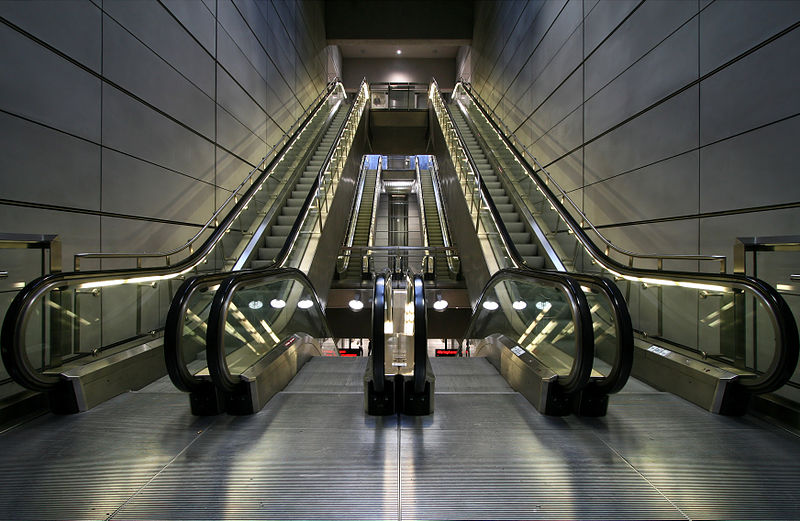

Nathan Ames is credited to have been the first to patent escalator like machines in 1859. It was a quite general description and it still took some 35 years until a first escalator was built. Since then we have gained some incredible metaphors for human behavior.
Escalators have a simple task which is to carry people from one floor to another. They are doing it so well, that when stairs and escalators are found side by side the stairs most often will remain empty and incentives have been created to use stairs instead of escalators. One of these ideas was the piano staircase as part of the fun theory initiative.
That such suggestions arise is due to the so called escalator syndrome: Most people will step onto the escalator and then start waiting until it brings them to the other floor, they will do so while rushing from one place to another. Stepping on the escalator seems to induce that it is the moment to let systems take over, to give up the responsibility to move on and give in to automation.
The comic Mitch Hedberg could thus use one of the fantastic features of escalators “An escalator can never break: it can only become stairs” to introduce a joke.
Tim Piper turned this modern parable into a commercial, telling the story of two executives getting stuck on the escalator as it breaks down. Being so used to a machine moving them forward they could not see beyond the feeling of being stuck. They had lost awareness of their ability to continue walking as the escalator turned into a normal staircase. The stairs might not feel as convenient but they allow to get unstuck.
This is a point to gain awareness of our situation and its opportunities.
Using another escalator metaphor, we can have a look at the way our brain transforms learning into habits to help us gain awareness. In 2003, R.F. Reynolds and A.M. Bronstein published a study related to the “The Broken Escalator Phenomenon,” which they defined as “an odd sensation of imbalance, despite full awareness that the escalator is not going to move.” The first step onto the escalator as well as the first one leaving the escalator imply that we have to move our body onto or from a moving platform. These steps are usually done with more attention than others. A consequence seems to be, that after having done this several times, we learned to adapt. Our brain soon becomes so accustomed to it, that we still expect the escalator to move even if we see, that it is stopped. The relative ease of learning to adjust to such movements seems to bypass cognitive control more easily than other learning, converting it into unconscious behavior, which is why our first step onto the stopped escalator will remain too fast and feel as if lacking control.
Do systems and ease of tools create a similar effect on us leading into apathy and loose our ability to get from problem to solution?
Go out and gain awareness of systems, situations and opportunities to make use of them.
[Original publication via frogstalk.com, Feb 02, 2015]
